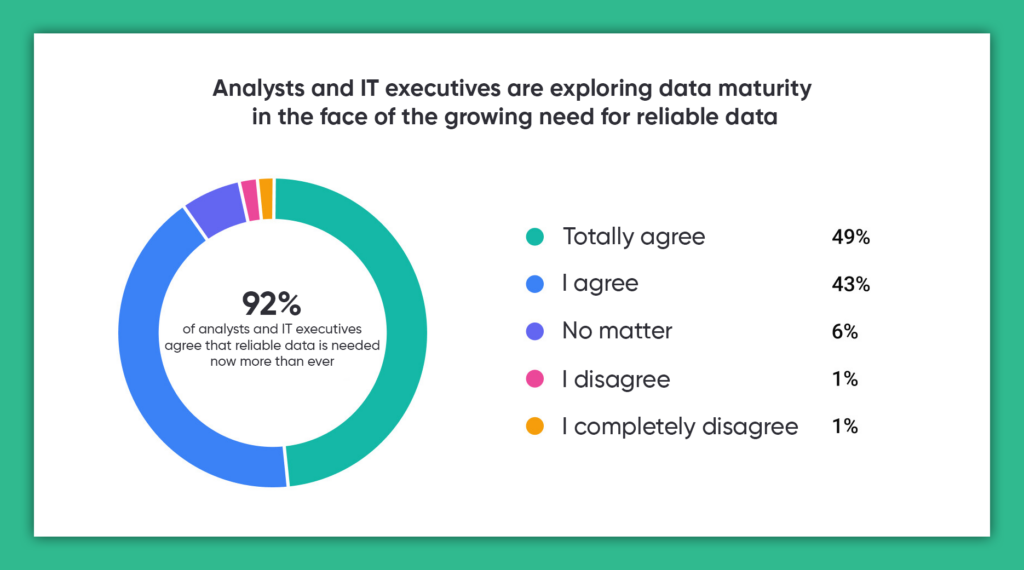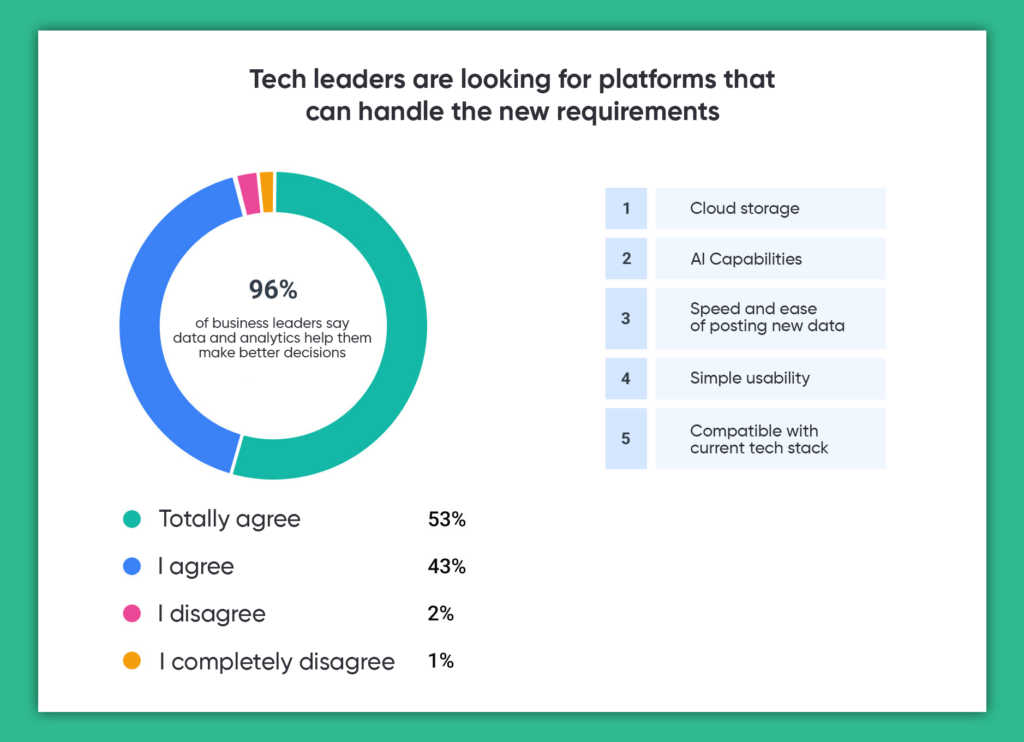
7 Main Problems Preventing the Introduction of AI Into Your Work
Insights from 10,000 analysts, IT specialists and executives – all about AI. If you are not familiar with the topic of artificial intelligence and want to understand what’s what from the experience of real companies, ensure you read this article!
Artificial intelligence has already shown that it can do many useful things and simplify the work of a company, especially in areas like AI in marketing. But it has barriers that have so far prevented AI from taking over the world and companies from introducing it into processes. We analyze these barriers with our WGG Agency and tell you what to do.
The Main Problem: Generative AI Needs a Diet
Get an answer to any request, invent a law and analyze the market: all this is not enough for AI to work for business.
After the boom in artificial intelligence, researchers realized that it is not enough to invest in the technical capabilities of AI in the hope that it will change and optimize work. Verified data has become more important. Companies want to instill in AI the value of fact-checking: after that, everything will change.
“Companies are adopting AI so quickly that data reliability is becoming increasingly valuable. To instill this value in AI, you need to instill it in the data that feeds it. Imagine that artificial intelligence has a diet: it can eat fast food, or maybe it can eat proven products. Simply put, AI will give a business real profit only when it is fueled by accurate data. Our analytics show the urgent need for reliable information now more than ever.” – Wendy Batchelder, Chief Data Officer at Salesforce

But it’s not just about data reliability: there are other issues that are holding companies back. We talk about them below.
6 More Reasons Why AI is Difficult to Implement
Companies’ IT infrastructure is not ready for AI
Company databases and their technical structure are not yet ready for artificial intelligence. There are still few tools within the infrastructure that can easily be synchronized with AI: simply because AI is a new thing, and when the infrastructure was created, it did not have the task of working with artificial intelligence.
There is no unified data system
If you still have all your information stored in dozens of tables, documents and applications, there is reason to think about some kind of unified platform or well-thought-out storage system.
Without an organized data system, AI will not produce results.
Data inaccuracy
Artificial intelligence is limited to company and open-source data, so it may not provide the full picture or use unreliable information.

The sales and service departments are least confident in the accuracy of the data, and the analytics departments are the most confident.
Ethical issues
Firstly, AI does not always make decisions based on the value of human life, although sometimes it can be set as a condition.
Secondly, AI works based on data from the Internet, and it is full of unethical stereotypes. For example, when searching for “doctor,” men are more likely to appear, “teacher” is a woman, “woman” is a housewife, etc.
It turns out that AI is biased in advance because it works based on data from the Internet, and it contains stereotypes and biases. This is called AI bias.
No system data collection and data strategy
41% of leaders say their data strategy is only partially aligned with their goals or not at all. This means there is no coherent analytics of user and market data. And without this, it is difficult to implement AI: it simply will have nothing to analyze.

Only 32% of executives and analysts measure and study the value of data monetization.
Security Threats
78% of analysts, executives and IT leaders say they have difficulty achieving business goals due to data problems, including data security.
Firstly, precedents are already emerging where AI illegally analyzes book materials, for example. Although the authors did not give consent to this.
Secondly, there is no clarity: what will happen to the data loaded into the AI. It is unclear whether they will become part of AI knowledge or not. And there may be confidential information about both users and the company.
This results in a conflict: you can implement AI and achieve goals with its help, but this threatens the security of the company and users.

How to Implement AI and Solve the Problems Above: 4 Tips
Tip №1: Invest in proven AI information to get reliable conclusions at the output
79% of analysts and executives plan to invest in data visualization and AI, 75% in training and development of artificial intelligence using verified data.
To receive verified information for loading into AI, invest in analytics: outsourced or inhouse.
Tip №2: Change your approach to information management to reduce data gravity
We already wrote above that without a unified data system it is difficult to implement AI. Therefore, managers organize information so that it is easier to use, not just store.
For example, 85% of analysts and IT managers manage data to control and validate the quality of information. If this is not done, the AI will begin to consume low-quality data and produce incorrect results.
It turns out that AI is an incentive to bring order to how a company organizes databases and how it uses them.
More mature companies (those where data is managed systematically and measured at every stage) are more likely to see the benefits of AI in democratizing access to data, for example.
Data gravity occurs when information within a company is scattered across different systems or in places where it is difficult to export, combine, and analyze.

To combat gravity, executives and analysts are managing data using different approaches and increasingly relying on hybrid or on-premise solutions.
Therefore, 75% of analysts and IT companies have already launched the migration of data warehouses and began to transfer databases to new platforms.
Tip №3: Look for new platforms and business solutions for data storage and analysis to implement AI
96% of executives and analysts say AI and strong databases speed up decision making.

The main criteria for new platforms and databases are cloud storage, AI capabilities, speed and ease of hosting new data, simple usability for users and compatibility with the current technical stack.
Tip №4: Look for processes where AI will be useful, rather than implementing it just to implement it
With the hype of news about AI, you can go crazy and connect it to all processes in a row so as not to miss the opportunities of the new era. And this can be a mistake – not all processes need AI, it does not produce results everywhere and it will not simplify work everywhere.
Look at the company’s work soberly and analyze processes to find points of application of AI before implementing it.
The same thing, but 5 times shorter
Conclusions from the study. This is what prevents the adequate implementation of AI in a company’s work:
- IT infrastructure is not ready for AI. Data is difficult to analyze and upload to AI, and if you do everything manually, you will waste a lot of time.
- There is no single data system. When different departments work on five platforms at once, and no one really knows where to find some information – in Google Doc, Miro or telegram.
- The data is inaccurate , unverified, or non-existent. This is what companies with low data maturity are called: when data is not collected and analyzed at every stage
- Ethics. Artificial intelligence is biased because it uses information from the Internet. And there are stereotypes and unverified data.
- The business has goals , there is a desire to implement AI, but there is no organized strategy for data collection and analytics. Or there is nothing at all. As a result, AI simply has nothing to analyze.
- Safety. Firstly, it is not yet clear whether it is legal to use all the information that AI provides. Secondly, it is unclear: what will happen to the data that you upload to AI for processing.
And tips on how to overcome the problems above and introduce AI into the work of the company:
- Invest in reliable data and analytics, either outsourced or inhouse, so that AI produces correct output results.
- Change the approach to data management and reduce its gravity. Use hybrid data storage solutions to make it easier to export, store and use.
- Look for platforms and business solutions that will be easy to connect to and synchronize with AI.
- To look for processes where AI will be really useful, and not to implement it just like that, in fear of falling behind civilization.
Thank you for carefully reading our work. We sincerely hope that this information will help you with the productive use of the AI system for your business.























